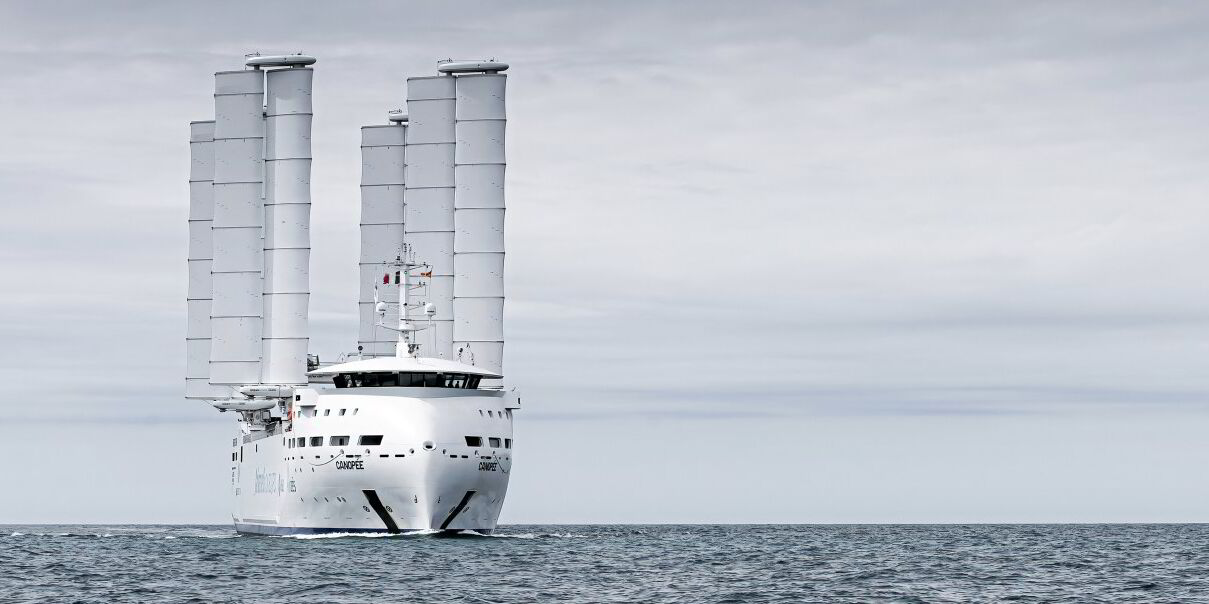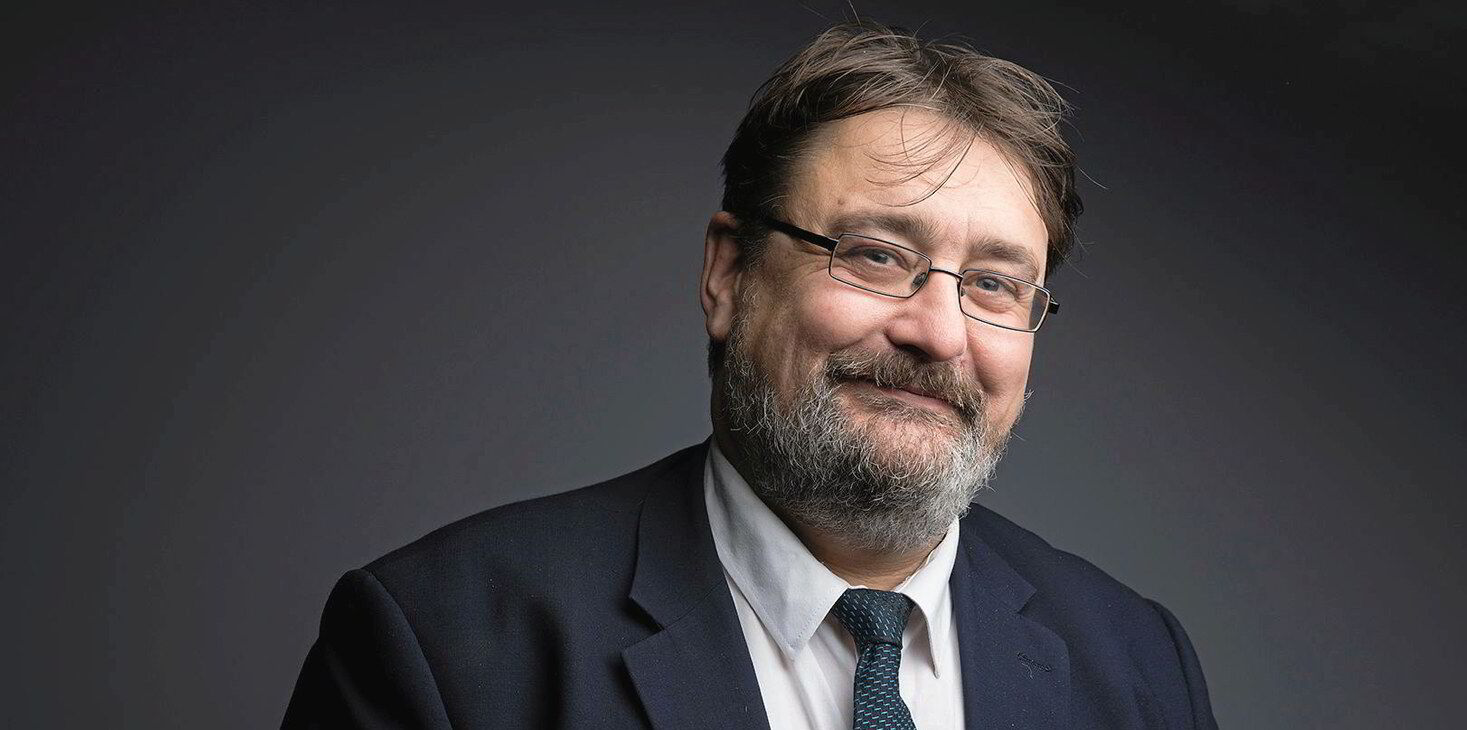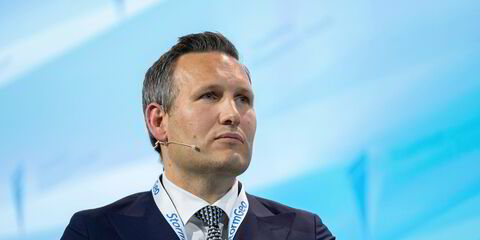Multi-ship newbuilding orders have helped to cement wind propulsion as a key emerging solution in the decarbonisation effort.
But to build the momentum it deserves, there must be established standards for verifying fuel savings and emissions reduction claims. This will ensure the industry can trust and adopt these technologies, both for retrofitting existing ships and for newbuildings.
The belief in the technology was demonstrated recently when the UK’s Union Maritime said it aims to install wind propulsion devices on 34 tanker newbuildings for delivery between 2025 and 2027.
Also, France’s Louis Dreyfus Armateurs ordered three ro-ros with six wind propulsion rigs per vessel for delivery in 2026.

Mitsui OSK Lines of Japan has indicated that six of its bulker newbuildings and one multipurpose vessel for delivery over the next 12 to 18 months will have wind propulsion devices installed, growing to 25 vessels by 2030 and 80 ships by 2035.
Today, there are 41 large commercial vessels over 400 gt with some form of wind propulsion technology installed, 11 wind-ready vessels and an additional 10 traditionally rigged small cruise vessels operating.
This number is slated to double by this time next year. It will then double again by mid-2026, taking us well over 100 ships in operation with wind propulsion technology. We will see a critical mass forming in many of the industry market segments such as bulkers, tankers, ro-ros and general cargo vessels at this time.
However, some headwinds remain. Wind propulsion systems vary in size and application and there is not a one-size-fits-all solution. Predictable liner services offer more consistent performance validation compared to vessels engaged in tramping, even though weather routing and forecasting have become increasingly reliable.
There is a need for standardisation, benchmarks for performance and third-party validation, all helping the derisking of investments, and these are needed more and more to enable the technology segment to scale.
The next 12 to 18 months will see much of the current work underway in these areas coming to fruition.
We are also seeing an uptick in primary wind vessels, with four between 400 gt and 1,000 gt entering into operation this year and three larger ones on order and under construction, among many other vessels.

Market drivers are converging
When we refer to the Four Winds, we are usually indicating scattering or dispersal, but in this case the four winds driving these developments are converging. These are robust technology development, a growing demonstrator fleet, emissions regulations and a profitable business case.
One issue that is being borne on these winds is the need for a “just and equitable transition”. Taking the ”just” element, crew training and the acceptance of these new systems among seafarers is growing and anecdotally crew members take great pride in the deployment of these zero-emission systems.
They relish the feedback opportunity on the operations and are engaged by being on a ship that is making a meaningful environmental contribution while helping profitability and securing their employment.
From an “equitable” transition standpoint, the use of wind propulsion offers a low-cost and quickly deployable option for least-developed countries and large ocean (or small island) developing states where long distances, high fuel prices and lack of shipping options exist.
The challenge remains to front-load the required investment, enabling regions to lock in the huge benefits of unplugging from fossil fuel dependency.
These winds are starting to merge and create the basis for a perfect storm likely to make landfall around 2026. From a technology perspective, multiple wind propulsion systems are in the market — with many more in the pipeline.
Designs, materials and rigs are being refined and optimised after accumulating hundreds of thousands of hours of operation and thousands of port calls collectively. As for demonstrators, the impact of seeing and experiencing wind-assist and primary wind vessels in operation is of significant influence.
The other two winds blowing are intertwined: regulation and the strong business case. While the industry is underpinned by artificially cheap fossil fuels, the use of a free, abundant and globally available energy source still makes sense economically.
This is because the technology used to harvest wind will pay for itself.
Also, due to economies of scale and market competition among technologies, costs are already starting to fall, which will ultimately lower prices in the market. The low price of fuel and lack of regulatory drivers were the headwinds in the past, but now, rising fuel prices, the need to decarbonise and regulatory drivers strengthen the business case.
These four converging winds have the potential to drive the industry in front of them.
However, we still have choices and decisions to make, not least over standards.
As any good competitive sailor will tell you, no one wins the race by staying in the safety of the marina, but equally only a fool sets their sails to capture the full force of those winds without having confidence in the technology, their crew and a strategy to win.
Gavin Allwright is secretary general at
the International Windship Association.
Do you have an opinion to share? Email: news@tradewindsnews.com(Copyright)



